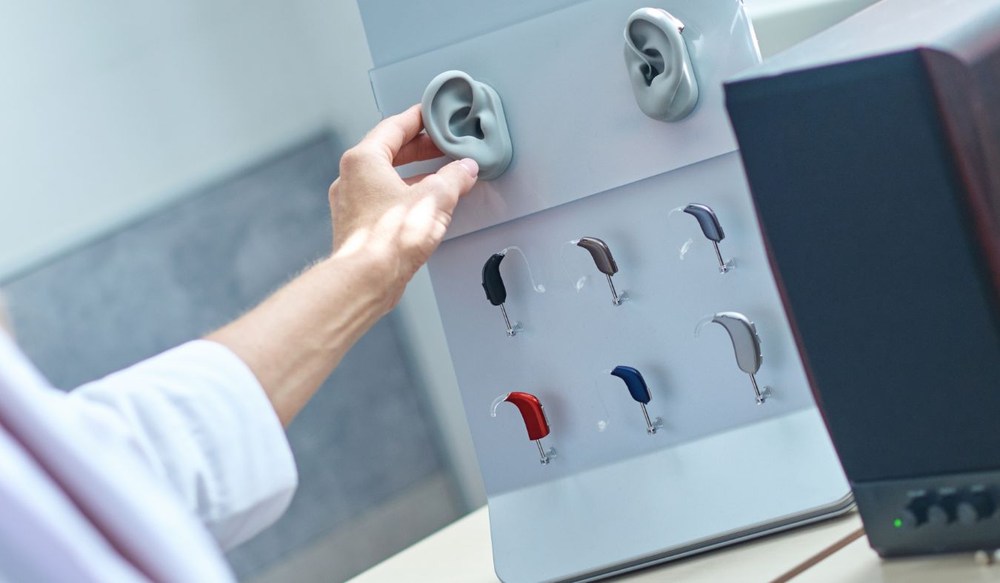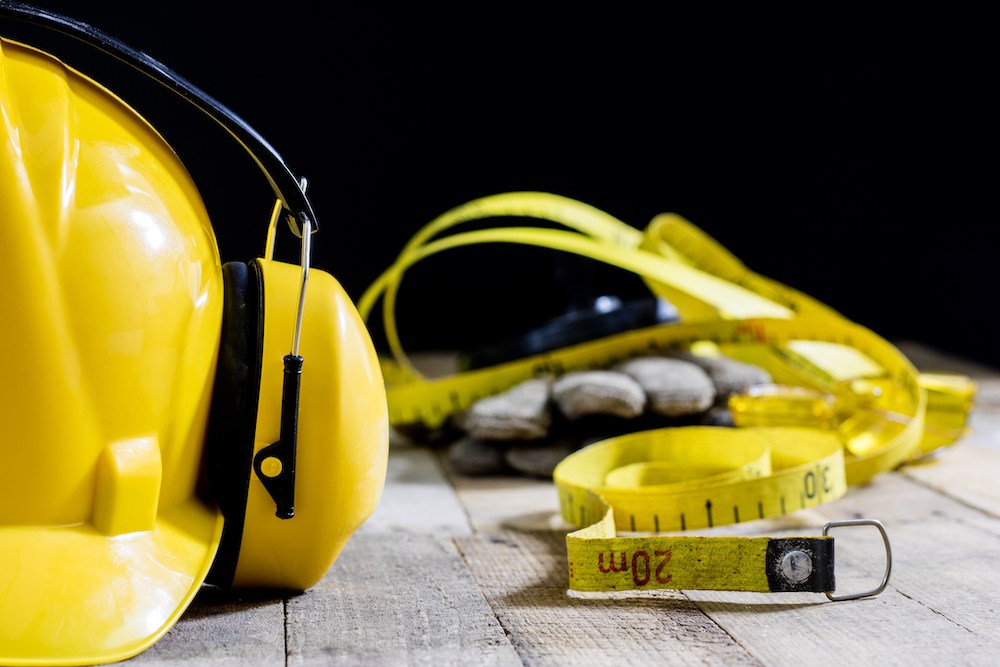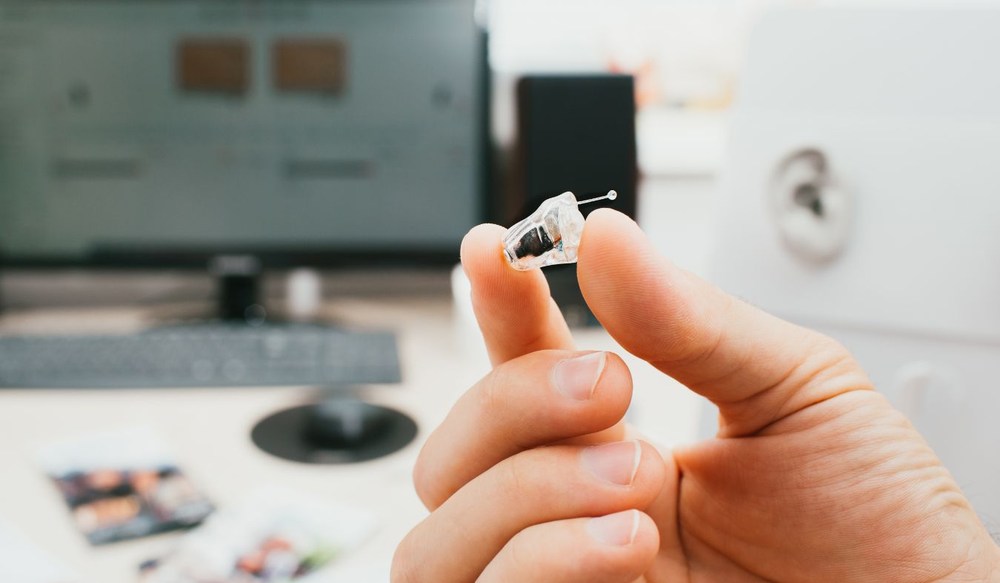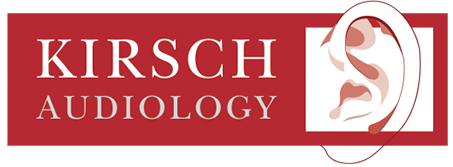How to Protect Your Hearing During Fall Festivals
Fall festivals bring live music, crowded spaces and loudspeakers that can
An interview with Lyn Kirsch, Au.D.: In honor of Black History Month, CAA celebrates diversity of the audiology community in California.
Read More →

By: admin | July 29, 2025
Getting hearing aids fitted properly can be tricky because your audiologist’s quiet office doesn’t really match the environments where you’ll actually use them. You might leave feeling like your hearing aids sound great, only to discover they don’t work as well in your favorite restaurant, during family gatherings or while talking on the phone. The challenge is that hearing aid adjustments are usually based on how things sound in a clinical setting, which is quite different from the noisy, unpredictable places where you spend most of your time.
Virtual reality technology is starting to change how hearing aid fittings work by creating realistic sound environments right in the audiologist’s office. Instead of guessing how your hearing aids will perform in different situations, you could potentially test them in virtual versions of busy cafes, crowded shopping centers or windy outdoor spaces. This technology allows for more precise adjustments based on how you actually hear in the places that matter to you. While VR in hearing care is still developing, it represents an exciting possibility for making hearing aid fittings more accurate and personalized to your real-world needs.
Choosing a hearing aid begins with understanding your hearing needs and lifestyle. Your audiologist will talk with you about where you have the most trouble hearing, review your test results and explain which types of devices might help most.
They will guide you through different styles and features, helping you compare options that fit your daily routine and budget. This careful selection process ensures you feel confident about your choice and know what to expect. Once you have selected your hearing aid, your specialist will get everything ready for the fitting appointment where you will start using your new device.
During the programming part of a hearing aid fitting, your audiologist will adjust the device to match your hearing prescription. This process is not just about turning up the volume but shaping how the hearing aid amplifies different pitches and sounds to meet your specific needs. The goal is to make quiet sounds easier to hear, keep louder sounds comfortable and improve speech clarity in everyday environments.
Real ear measurement is an important step during programming. A slim probe microphone is placed in your ear canal while you wear the hearing aid, allowing the audiologist to measure exactly how the device amplifies sound inside your ear. Since ear canal shapes vary from person to person, this measurement ensures the hearing aid provides the right level of amplification tailored to you. It helps avoid sounds that are too soft or uncomfortably loud and creates a more natural listening experience.
Live speech mapping can also be used to fine-tune the hearing aid. Your audiologist will play speech sounds while you are wearing the device, showing in real time how it handles speech frequencies. This approach ensures that conversations are clearer and more understandable in real-life situations. You may be asked to listen to a variety of sounds and share what feels natural or what might need adjusting. Sharing details about where you most often struggle to hear, like busy restaurants or meetings, can help guide these adjustments.
Throughout the programming process, you are encouraged to ask questions and share feedback. The aim is to make sure your hearing aids sound natural, feel comfortable and truly support the situations where you want to hear your best.
Virtual reality technology uses computer-generated images and sounds to create immersive, lifelike environments that simulate real-world scenarios or entirely new experiences. Users wear a headset and sometimes use handheld controllers to look around and interact with these virtual spaces as if they were really there. This sense of presence and realism makes VR a valuable tool in many settings.
Healthcare has adopted virtual reality for a range of applications. Medical students and professionals practice procedures and decision-making in realistic simulations, allowing them to gain experience without any risk to patients. Physical therapy programs use guided virtual exercises to motivate patients, track movements and support rehabilitation goals in a more engaging way.
Reducing anxiety during medical procedures is another important benefit of VR. Patients can be immersed in calming environments or interactive distractions, making stressful treatments easier to tolerate and improving the overall care experience. These uses of VR aim to create more comfortable, patient-focused care while also supporting healthcare professionals.
Virtual reality is making its way into hearing care in several innovative ways. It offers immersive environments where patients can experience realistic soundscapes, which helps audiologists assess and address hearing challenges more effectively. For example, VR can simulate everyday situations like busy restaurants or crowded streets, giving users a better sense of how hearing devices perform in real life.
Beyond helping with hearing aid selection and fittings, VR is also being explored for auditory training, where users engage in exercises designed to improve their listening skills and brain processing of sound. This technology can make rehabilitation more engaging and tailored to individual needs.
In addition, virtual reality shows promise as a tool to support those dealing with tinnitus or other auditory conditions by providing calming environments and interactive therapies that reduce symptoms and improve quality of life.
Using virtual reality technology, it is now possible to create sound environments that closely match real life. This means you can hear what your hearing aids will sound like in places like restaurants, parks or family gatherings right from the clinic. These lifelike sound settings give your specialist a clearer picture of how your hearing aids perform, allowing for more precise adjustments tailored to your daily listening needs.
Simulating everyday listening situations during a hearing aid fitting helps prepare you for the real world. You get to experience how your hearing aids handle busy stores, conversations with multiple people or noisy family gatherings before you even leave the clinic. These simulations support you in several important ways:
Virtual reality offers a new way to experience hearing care by creating detailed, realistic sound environments. Instead of imagining how hearing aids will perform, you can hear and interact with a variety of everyday listening situations right in the clinic. This helps you better understand what to expect from your devices once you use them outside of appointments.
Using VR can ease the uncertainty many people feel when adjusting to hearing aids. Being able to test different sounds and settings in a controlled virtual space gives you a clearer idea of how your hearing aids will handle noisy or complex environments. This preparation can make it easier to manage real-world listening challenges.
Additionally, VR allows audiologists to collect precise feedback during the fitting process and make adjustments based on your experience. This technology supports a more personalized approach to hearing care, helping ensure your devices meet your specific needs and preferences.
Weighing the Benefits and Challenges of VR
Virtual reality is opening new possibilities in hearing care by creating immersive sound environments that help both patients and audiologists better understand hearing needs. One major benefit is the ability to simulate real-life situations, like noisy restaurants or outdoor gatherings, within a controlled setting. This helps specialists make more precise adjustments and allows patients to experience how their devices will perform before leaving the clinic. It also builds confidence and eases anxiety about using new hearing aids in everyday life.
Another advantage of VR is its potential to make the fitting and rehabilitation process more engaging. Interactive simulations encourage patients to take an active role in their care, providing real-time feedback that helps customize hearing devices to individual needs. VR can also support auditory training and therapy, making these exercises more motivating and accessible.
Some users may find the VR equipment less comfortable at first, and sessions that include virtual reality might take a bit more time. Despite these minor considerations, VR’s ability to enhance personalization and improve the patient experience makes it a promising tool in hearing care.
Hearing aid adjustments are important because everyone’s hearing and listening needs are unique and can change over time. Even after the initial fitting, your hearing aids may need fine-tuning to ensure they provide the right balance of volume, clarity and comfort for different environments. Sounds that seem clear in the clinic might feel too loud, too soft or unclear once you’re in real-world situations like busy streets, restaurants or quiet conversations.
Adjustments also help address how your brain adapts to hearing amplified sounds. It can take time to get used to new hearing aids, and small changes can make a big difference in how natural and comfortable the sound feels. Additionally, your hearing needs may evolve due to changes in your hearing ability or lifestyle, making regular check-ins and adjustments essential to keep your devices working well for you.
Overall, hearing aid adjustments ensure that your devices continue to meet your needs, improve your listening experience and help you stay connected to the sounds around you.
Getting the right fit for your hearing aids is about more than how they sound in a quiet office. It’s about how they perform where you live your life, in noisy restaurants, during lively family gatherings or on important phone calls. Because real life environments are unpredictable and full of background sounds, adjustments made only in clinical settings might not fully address your listening challenges. That’s why ongoing fine tuning is so important to make sure your hearing aids support you as well as possible every day.
Virtual reality technology is helping us close that gap by creating realistic sound environments right here in the clinic. This lets us work together, making adjustments based on how your hearing aids perform in virtual situations that reflect your lifestyle. If you want to explore personalized hearing care with the latest tools and expert guidance, contact Kirsch Audiology in Santa Monica, CA at 310-586-5533. We’re ready to help you find the best fit for your hearing needs and daily life.
Tags: benefits of hearing aids, hearing aid basics, hearing aid fitting

Fall festivals bring live music, crowded spaces and loudspeakers that can
By: admin | October 20, 2025

Getting hearing aids fitted properly can be tricky because your
By: admin | July 29, 2025

When the weather warms up and you’re ready to get back outside, your
By: admin | June 20, 2025
